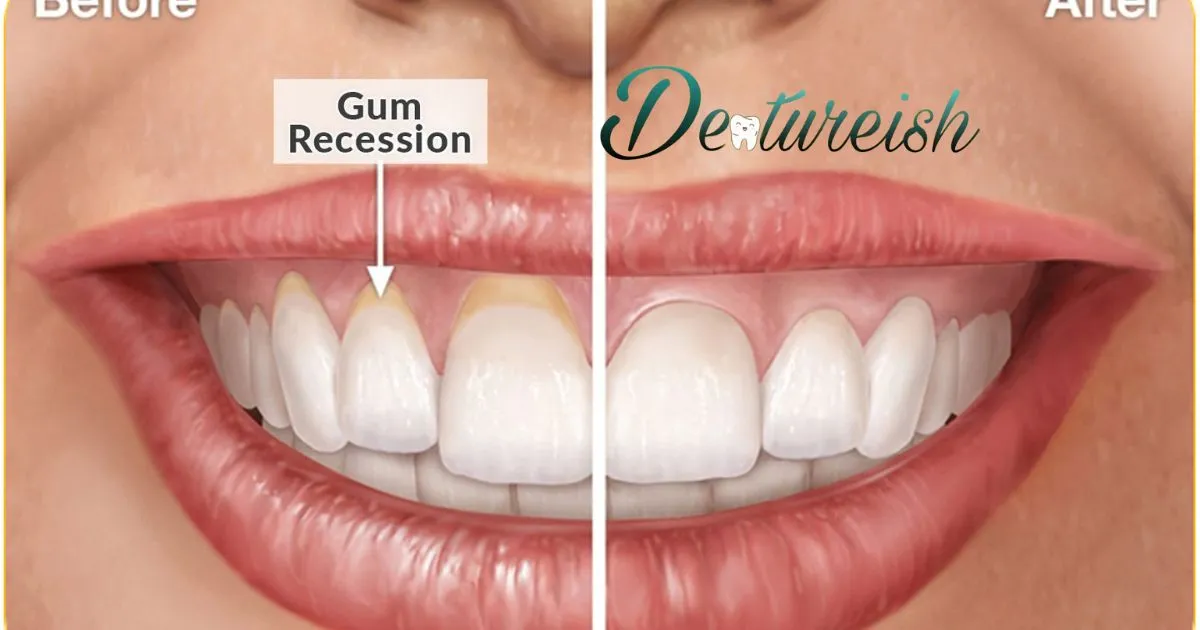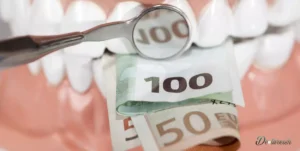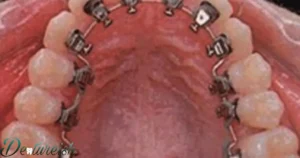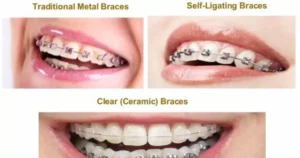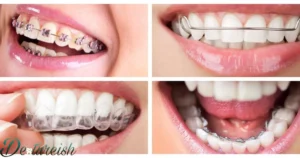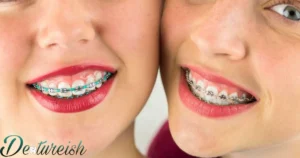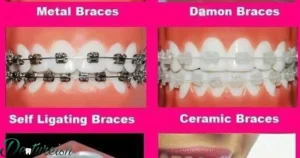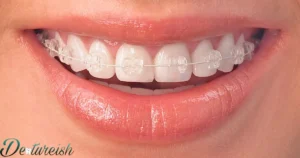Fixodent is a popular denture adhesive that can sometimes adhere too strongly to the gums, causing discomfort when removing dentures. To remove Fixodent from gums, it is best to soften the adhesive first for easier cleanup. This can be done by applying warm water or an oil-based product to the dentures and gums before gently peeling away any remaining adhesive residue. Taking proper precautions prevents irritation or damage when removing Fixodent from delicate gum tissue.
Have you ever struggled to detach your dentures, thanks to excessive denture cream adhesion? If so, you’ve likely wondered about the best way to remove Fixodent from gums without causing irritation. Well, wonder no more. With some warm water and gentle peeling, you can remove Fixodent from gums smoothly.
The best way to remove Fixodent from gums involves softening the adhesive first by applying warm water or an oil-based product. Once softened, the Fixodent can be gently peeled off the gums without pulling or tugging, preventing damage to the delicate gum tissue underneath. This simple method eases the removal process greatly.
How can I safely remove Fixodent denture adhesive from my gums?
Gently brush the adhesive off your gums using a soft-bristle toothbrush and warm water. Avoid pulling at it, as this can damage your gums. You can also use an unscented denture cleaner, adhesive remover wipes, or an adhesive solvent to help break down the adhesive residue. Be very gentle when removing any leftover adhesive.
What problems can Fixodent cause if left on gums?
5 potential problems that can occur if Fixodent is left on gums:
- Irritation and inflammation of gum tissue. The adhesive chemicals can cause redness, swelling, and discomfort if left in prolonged contact with gums.
- Increased risk of infection. Bacteria growth is encouraged when adhesive residue remains stuck on gums overnight. This raises chances of fungal and bacterial infections.
- Bone loss around teeth. Studies show extended Fixodent use causes bone loss as the adhesive prevents natural stimulation needed for bone regeneration.
- Digestive issues if accidentally swallowed. Excess zinc and other compounds found in some Fixodent formulas can cause constipation, nausea, and stomach pain if ingested.
- Difficulty removing dentures. Leftover adhesive clumps make taking out dentures more challenging the next day. It requires more effort to detach the bonded seal.
What ingredients in Fixodent can irritate gums?
Fixodent contains zinc, polyethylene glycol, mineral oil, and carboxymethyl cellulose as potential irritants. The zinc in Fixodent may cause burning or irritation. Those with zinc allergies are at higher risk for gum irritation and inflammation from using this adhesive frequently.
Should I avoid using adhesives with zinc in dentures?
Yes, if zinc causes irritation or discomfort, choose a zinc-free denture adhesive. Zinc-free options like Sea-Bond or Remove Glue From Dentures Poligrip Free Denture Fixative Cream are available. Talk to your dentist before switching adhesives to ensure proper fit and function of your dentures without zinc.
Are there alternatives to Fixodent for denture wearers?
Yes, zinc-free adhesive products can be an alternative, like Sea-Bond adhesive seals. Denture pastes or powders, dental wafers, or dental cushions can also work instead of creams with zinc. Proper denture cleaning is key, so brushing with non-abrasive paste and using an effervescent cleaner can help avoid excessive adhesive use.
What steps should I take to remove Fixodent residue from gums?
To remove Fixodent residue from gums, first rinse your mouth with warm water or a mouthwash like Scope for about 30 seconds to help loosen the adhesive. Then use a soft-bristled toothbrush with a small amount of toothpaste to gently brush the gums, which will remove any remaining adhesive and promote gum health.
Finish by rinsing your mouth again. Using your fingertips to massage your gums can also help remove residue. Repeating these steps two or three times should thoroughly remove all adhesive.
How can I loosen dried Fixodent adhesive on gums?
If the Fixodent adhesive has dried on your gums, the first step is rinsing your mouth with warm salt water for 30 seconds. The salt water helps loosen and dissolve the adhesive seal.
You can also use an alcohol-free mouthwash instead of salt water. After rinsing, use a soft toothbrush or washcloth with warm water to gently wipe the gums, which should help remove most of the dried adhesive. For any remaining bits, use your fingertips to firmly massage the gums in a circular motion to break up and remove the adhesive residue.
What can I use to gently wipe Fixodent off my gums?
| Method | Sentence |
| Warm washcloth | Gently wipe gums with a warm wet washcloth to loosen Fixodent. |
| Cotton swabs | Use damp cotton swabs to gently dab adhesive off gums. |
| Soft toothbrush | Brush gums very softly with a toothbrush to remove leftover Fixodent. |
| Salt water | Rinse mouth with warm salt water to dissolve and rinse away Fixodent on gums. |
| Mouthwash | Swish mouthwash around to dissolve adhesive residue stuck on gum tissue. |
Should warm salt water help remove Fixodent from gums?
Warm salt water can help remove Fixodent adhesive from gums. Dissolve 1/2 teaspoon of salt in a cup of warm water. Rinse your mouth with the solution for 30 seconds, allowing it to wash over all gum surfaces covered by the dentures.
The salt water helps loosen the adhesive seal so residue on gums can be wiped or brushed away more easily. It also lightly dissolves adhesive. Rinsing with salt water before and after removing dentures can ensure gums are free of adhesive.
Can denture cleaners also clean Fixodent off gums?
Denture cleaners that are specifically made to remove adhesive residue from dentures can also be used to remove Fixodent from gums. After removing dentures, apply a small amount of the paste or liquid denture cleaner directly to gums.
Gently massage it into gum tissues before rinsing thoroughly with warm water. The denture cleaners contain active ingredients designed to break down and dissolve denture adhesive. Using them directly on gums allows the ingredients to lift off and clean away any Fixodent residue.
How can I prevent Fixodent buildup on denture gums?

According to the sources, applying Fixodent sparingly in small strips or dots and avoiding the edges of the dentures can help prevent buildup. Additionally, properly cleaning the dentures and gums daily is important to remove any leftover adhesive residue.
Gently brushing the gums with a soft toothbrush and non-abrasive toothpaste is recommended. Avoiding overuse of adhesive over prolonged periods can also reduce chances of buildup on the gums over time.
Should I apply Fixodent sparingly to dentures?
Applying Fixodent sparingly is recommended to avoid excessive buildup. The sources suggest using small strips or dots of adhesive instead of covering the entire denture surface.
It’s also important to avoid getting too close to the edges when applying. Using the minimal amount needed to secure the dentures is best. Ill-fitting dentures may require more adhesive, so getting properly fitted dentures or having them relined when they become loose is ideal to reduce reliance on adhesive.
Will rinsing dentures prevent Fixodent residue on gums?
Rinsing with warm salt water can help loosen some of the adhesive seal. However, additional cleaning is still required after rinsing to fully remove residue from the gums. Gently brushing the gums with a soft toothbrush and non-abrasive toothpaste is recommended to clear any remaining adhesive. Rinsing provides a good initial cleanse, but does not completely prevent buildup on its own. Proper daily denture and gum care is still essential.
Can I swap denture adhesives regularly to protect gums?
There is no evidence from the sources that swapping between different denture adhesive brands or products will help protect the gums. Regardless of the specific adhesive used, following the proper application guidelines sparingly and practicing good daily denture and gum cleaning habits will best prevent buildup. Getting properly fitted dentures is also key to avoid over-reliance on adhesive use.
Are there dental products to protect gums from Fixodent?
The sources do not mention any specific dental products designed to protect gums from Fixodent residue besides regular oral hygiene products like soft toothbrushes, non-abrasive toothpaste, and salt water rinses.
Again, the best protection comes from proper denture fit, sparing adhesive use, and consistent cleaning of dentures and gums. Seeing a dentist promptly if experiencing gum irritation or discomfort is also recommended.
What home remedies safely clean Fixodent off gums?
The safest and most effective home remedies to clean Fixodent off gums are warm salt water, mouthwash, saline solution, and a soft-bristle toothbrush. Gargling warm salt water for 30 seconds helps loosen the adhesive seal. Swishing mouthwash around not only freshens breath but also dissolves residue.
Rinsing with a salt and water mixture further removes leftover adhesive. Finally, gently brushing gums with a soft toothbrush and toothpaste clears remaining adhesive and promotes gum health. These methods are gentle, non-abrasive ways to fully remove Fixodent from gums without causing irritation.
Can aloe vera gel help clean Fixodent off gums?
While there is no evidence showing aloe vera gel helps remove Fixodent adhesive, it may soothe irritated gums after denture use. The cooling gel contains antibacterial and anti-inflammatory compounds that could calm inflammation. After removing Fixodent with warm salt water or mouthwash, apply a thin layer of 100% pure aloe gel directly on gums for temporary relief.
Aloe vera alone cannot breakdown or detach the strong adhesive bond. It should not be used as the sole denture cleanser. For best results, incorporate aloe into your oral care routine for its potential healing effects.
Will coconut oil remove stubborn Fixodent adhesive?
No, coconut oil does not effectively remove stubborn Fixodent adhesive from gums. The oil lacks solvents that dissolve denture creams. Rather than attempting to scrub off the sticky paste with coconut oil, rinse with warm salt water or mouthwash first to loosen the seal.
Coconut oil may then be applied to moisturize and soothe tender gums after adhesive removal. Its antimicrobial and anti-inflammatory properties can protect gum tissue irritated by dentures. While the oil cannot directly take off remaining Fixodent, it helps heal gum discomfort.
Can I use baking soda to clean denture gums after Fixodent?
Baking soda can be used to clean denture gums after removing Fixodent adhesive. Mix a teaspoon of baking soda with warm water to form a mild abrasive paste. Gently rub it onto gums using a soft-bristle toothbrush or clean fingertips. T
he gritty texture exfoliates gum tissue, removing dead skin cells and leftover adhesive residue. Baking soda also neutralizes acids for a deeper clean. Rinse thoroughly after scrubbing. Be very gentle when brushing gums to avoid irritation. The baking soda paste cleans gums without being too harsh.
Is salt water a natural denture gum cleaner?
Salt water is an extremely effective natural cleaner for denture gums before and after wearing. The saline solution actively breaks down and flushes away denture adhesive clumps stuck to gum tissue. Salt also naturally disinfects to prevent infection. Create a mix by adding 1⁄2 teaspoon salt to a cup of warm water.
Swish it around the mouth for 30 seconds, concentrating on areas covered by dentures. The salt water rinses away adhesive and food debris. For added freshness, stir in lemon juice. Repeat salt water rinses daily to remove bacteria and keep gums healthy.
When should I see a dentist about Fixodent on gums?
You should see a dentist if Fixodent is causing irritation, redness, swelling, tenderness, or sores on your gums. These could be signs of an allergic reaction or infection. It’s best to have your dentist examine your gums and determine if you need to stop using Fixodent or try an alternative adhesive. They can also make sure your dentures still fit properly. Don’t try to self-diagnose gum issues from denture adhesives – always consult your dentist.
If Fixodent causes red or swollen gums?
Red, swollen gums from using Fixodent require an exam by your dentist. They will determine if it’s a simple irritation that needs time to heal, an allergic reaction that requires stopping Fixodent use, or a fungal infection like oral thrush that needs medication.
Don’t attempt to self-treat red, swollen gums from denture adhesives. See your dentist promptly for an accurate diagnosis and proper treatment plan based on examining your gums. This will prevent the problem from getting worse.
For a dental checkup after using Fixodent?
It’s wise to have a dental checkup if you’ve been using Fixodent for an extended time25. Your dentist can examine if your gums remain healthy or show signs of irritation, inflammation, or infection. They can also inspect that your dentures still fit well and aren’t causing gum soreness themselves.
An periodic dental checkup allows early detection and treatment of any gum issues with Fixodent use before they become serious problems. This prevents complications down the road.
To fit me for new dentures without adhesives?
If Fixodent use is causing recurrent gum irritation or infections, your dentist may advise being fitted for new dentures that don’t require adhesives. First, they’ll treat any current gum inflammation or infections you have.
Then they can take impressions and measurements for creating well-fitted new dentures. Custom dentures made just for your mouth often don’t need messy adhesive pastes. This eliminates adhesive-related gum issues. Your dentist can determine if new dentures are the right solution.
To inspect for yeast or fungal infections from Fixodent?
See your dentist if Fixodent seems to be causing patches, swelling, redness, or soreness on your gums as these may indicate a yeast or fungal infection like oral thrush5. Your dentist can do a visual exam and possibly a culture to determine if candida fungi have infected your gums from extended Fixodent use.
They may prescribe an antifungal medication to clear the infection if that is the cause of your symptoms. Detecting and treating gum infections early prevents complications.
Frequently Asked Question
What is the safest method for removing Fixodent?
Use warm salt water to loosen residue, then gently wipe with a soft cloth.
Can coconut oil help remove Fixodent adhesive?
Yes, apply a small amount of coconut oil to help break down the adhesive residue.
Is baking soda abrasive enough to clean Fixodent off gums?
Baking soda is a mild abrasive that can help remove leftover Fixodent adhesive.
Should I see my dentist if Fixodent causes gum irritation?
Yes, consult your dentist if Fixodent causes redness, swelling, or discomfort in your gums.
How can I prevent Fixodent buildup on my gums?
Rinse dentures after each application of Fixodent and brush gums daily to prevent buildup.
Conclusion
The best way to remove Fixodent from gums is to see your dentist. They can properly examine your gums and determine the cause of any irritation or infection. Based on their diagnosis, they will recommend the appropriate treatment plan. This may include changing to another type of adhesive, taking a break from denture adhesives, or getting fitted for new dentures that don’t require adhesive use.
Trying to remove Fixodent at home can further irritate your gums or spread infection. Methods like salt water rinses may provide temporary relief but won’t treat the underlying cause. Don’t attempt to scrape off Fixodent yourself either. See your dentist instead for an accurate diagnosis and best way to remove Fixodent from your gums without causing harm.
